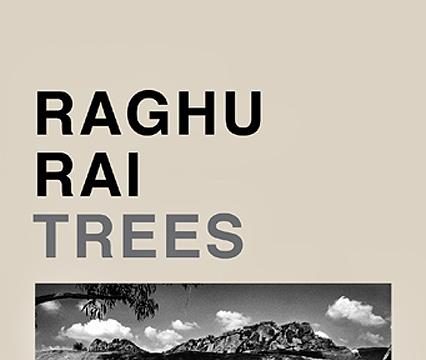The mark of a great photographer is the ability to take the commonplace and compel the viewer to look at it anew. If Raghu Rai does this with a facility that now seems paradoxically clichéd, it is because his ironic juxtapositions and unusual framings have become the commonsense of ‘art’ photography, the first trick that every aspiring lens-person relies upon. Yet, among the legions of followers who have been inspired by his style, few can match him. Why this is so becomes clear when one leafs through Trees, a collection of monochrome pictures by Rai.
At first glance, the images seem randomly selected. Some are indeed studies of trees: bare poplars, the trunk of a palm populated by colonies of ferns, a strangling fig, a cobwebbed kair (Capparis decidua). They play on light and shade and reflections, and the arresting irregularities of crooked branches, gnarled trunks and twisted roots. Others show treed landscapes: aerial views of fields and floodplains, a cyclone-hit village with fallen coconut palms strewn like scattered matchsticks. Still others show barren, arid places where a single tree provides balm to the eye. But in many of the pictures, trees seem almost incidental. They appear as props in some other drama: a crowd of men whose expectantly intent gaze drills through the viewer; a wrestler being massaged by his brothers; men bathing at a well; the backs of schoolgirls whose dupatta-covered heads are bent over their lessons in an open-air class. It is the inclusion of these pictures in the book that initially puzzles the viewer. Then, as one looks again and yet again, the trees come into focus and recast what we think we are seeing. Trees then stand revealed as quiet protagonists whose presence we have taken for granted.
Its large format may lead to Trees being seen as a ‘coffee-table book’. It is in fact a serious meditation on the subject by Rai, culled from decades of his work. I only wish it included information about where and when the photographs were taken.




